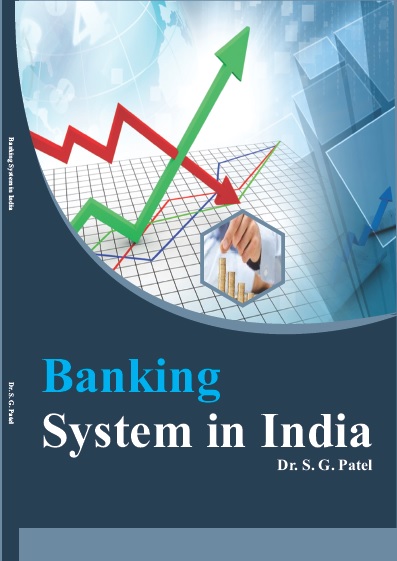SOCIAL SCIENCE AND HUMANITIES

Banking System In India
by Dr. S. G. Patel
ISBN Number : 978 - 1- 73040 - 507 - 5
Authors Details
| Author Name | Image | About Author |
|---|---|---|
| Dr. S. G. Patel |  |
Dr. Surendrakumar G. Patel is an associate professor in Accountancy with M P
Arts and M H Commerce College for Women, Ahmedabad since 1994. He is
MCom, PhD and has teaching experience of 27 years at BCom and MCom level.
He also extends his services as head of the department of commerce and in-charge
of PG center of the college. His areas of interest are accounting and finance. He has
participated in more than 30 workshops, national and international conferences
and presented research papers. He has completed one minor research project
sponsored by UGC and also participated National Faculty Development program
in entrepreneurship conducted by EDI, Ahmedabad. |
Book Description
Prevailing basic Structure of Indian Banking System is discussed in this book. The book is divided into seven chapters. Chapter 1: This chapter discusses different institutions of Indian banking system like Commercial Banks and Public Sector Banks, Differences between State Bank and Nationalised Banks, New Private Sector Banks, Local Area Banks, The Co-Operative Banks, Regional Rural Banks, Management of Rural Bank , Land Development Banks, Industrial Development Bank Of India, Industrial Finance Corporation Of India Limited, Industrial Credit and Investment Corporation of India Limited, State Financial Corporations, State Industrial Development Corporations (SIDCS), Discount And Finance House Of India Ltd., Small Industries Development Bank of India, Deposit Insurance And Credit Guarantee Corporation (DICGC), Export Credit Guarantee Corporation of India Ltd. (ECGC), THE INVESTING INSTITUTIONS like Life Insurance Corporation of India, General Insurance Corporation of India, Unit Trust of India and Export Import Bank of India (Exim Bank), National Bank For Agriculture And Rural Development (NABARD)and National Housing Bank are elaborated. Chapter : 2 The history of Indian banking system is discussed. Nationalisation, Liberalisation, Government policy on banking industry, phases of Indian Banking, Post Crisis Indian Banking, Mergers And Consolidation Of Public Sector Banks and Technological Changes are discussed. Chapter: 3 Functions of Reserve Banks of India like Monetary Authority, Issuer of Currency, Banker and Debt Manager to Government, Banker to Banks, Regulator of the Banking System, Manager of Foreign Exchange, Regulator and Supervisor of the Payment and Settlement Systems, Developmental Role etc. are discussed. Chapter-4 is on restructuring of Indian banks in which nationalisation of banks, resource mobilisation, credit operations, social banking, challenges of Consolidation, Early impact of Liberalization, Major Components of Reforms through recommendations of committees, Improving Financial Soundness of Banks, Strengthening the Institutional Framework, Strengthening of Supervisory Mechanism, Response to Reforms, Customer friendly banking initiativesetc. are discussed. Chapter – 5 : Reforms in financial and banking sector, its first phase of reforms in financial and banking sector, Narsimham committee report recommendations, legislative measures, the second phase of reforms, Narasimham committee report (ii), assessment of the financial sector reforms are Chapter: 6 Gist of the important committees, various norms, NPA, its impact are discussed Chapter – 7 Performance of Indian banking sector and challenges of banks in India, NPA in Indian banking system, its impact on profit, balance sheet and performance of private sector banks in India are discussed.














